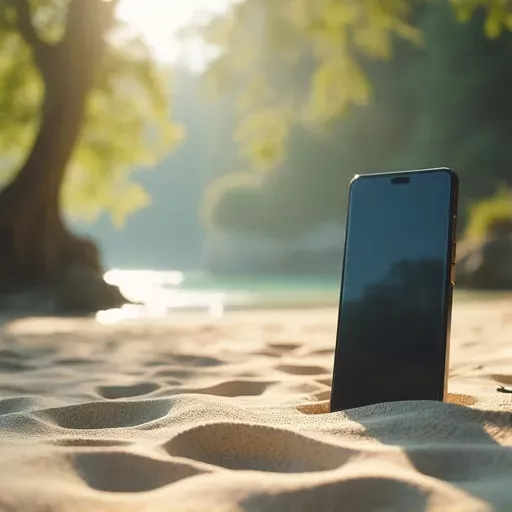It’s almost impossible to imagine a life without technology. Whether it’s checking emails, scrolling through social media, or gaming, screens have become an integral part of our day-to-day lives. However, with increasing screen time, it’s crucial to ask ourselves: are we impacting our mental health negatively by spending too much time on devices? This is where digital detox comes into play—a means to help balance technology use and improve our mental well-being.

Understanding Digital Detox: What It Means for Your Lifestyle Balance
Defining Digital Detox
A digital detox involves taking a break from digital devices to reduce stress and focus on life balance. It’s about intentionally unplugging from our phones, computers, and tablets to rest our eyes and rejuvenate our minds. This doesn’t mean cutting out technology entirely, but rather finding a healthy balance that includes screen-free periods.
Importance of Technology Balance
Balancing technology is crucial in ensuring that it doesn’t control our lives. A healthy relationship with our devices allows us to enjoy both the real and digital worlds without feeling overwhelmed. It helps to foster better relationships, boosts productivity, and enhances our overall mental health.
Connection Between Tech Use and Mental Health
Excessive tech use has been linked to anxiety, depression, and a lack of sleep. Mental clarity can be clouded by constant distractions from notifications and updates, making it difficult for individuals, especially young people, to focus on important tasks. A digital detox can help improve mental health by reducing these negative effects.
The Impacts of Excessive Screen Time on Mental Wellbeing
Mental Clarity and Stress Reduction
Taking breaks from screen time has been proven to reduce stress and improve concentration. Engaging in activities like walking, reading, and interacting face-to-face encourages mental clarity. A break from technology allows our minds to rest, reducing the overstimulation that digital devices often cause.
Recognising Tech Dependency
Many people have developed a dependency on their devices, often feeling the need to check their phones even without a specific reason. Recognising this dependency is a significant step towards digital detox. Have you noticed how many times you reach for your phone out of habit?
Online Activities and Their Effect on Mental Health
While online activities can be enjoyable and educational, they can also be harmful if consumed in excess. Social media, for example, often sets unrealistic standards, leading to low self-esteem and mental fatigue. It’s essential to find a balance in online activities to maintain positive mental health.
Recognising Signs of Unhealthy Tech Habits
Identifying Tech Mindfulness
Tech mindfulness is the practice of being aware of how you interact with your devices. Are you using them purposefully, or just out of habit? Identifying these patterns can help determine whether a digital detox could be beneficial.
Noticing Shifts in Mental Wellbeing
It’s important to be aware of any shifts in mental wellbeing that might be caused by too much screen time. Feelings of anxiety, restlessness, or trouble concentrating could be signs of needing a digital break. Listen to these warning signs to know when a detox might be needed.
Evaluating Your Screen Time Patterns
Most devices track your screen time usage. By examining these patterns, you can understand when and how often you use technology, helping you to pinpoint areas for improvement. Are there times of the day when screen time peaks, or apps that take up the majority of your attention?

Steps to Implementing a Successful Digital Detox
Crafting Healthy Routines for Tech Use
To reduce dependency, craft routines that include specific times for screen use and screen breaks. For example, allocate certain hours in the day for checking social media, and stick to it.
Setting Boundaries for Digital Wellness
Set boundaries to maintain digital health, like no devices at the dinner table or an hour before bed. Such practices encourage personal interactions and healthier sleep habits.
Lifestyle Tips for Reducing Tech Dependency
- Establish tech-free zones at home.
- Engage in physical activities such as sports or nature walks.
- Limit notifications to reduce distractions.
Creating Healthy Habits for Long-term Tech Management
Building Daily Routines to Balance Tech Use
Create daily routines that respect both your need for technology and your mental health. Morning mindfulness practices, regular breaks during work, and tech-free nights can help better manage time spent online.
Encouraging Family and Friends to Practice Digital Detox
Share your digital detox journey with family and friends, and encourage them to join you. Having support ensures accountability and makes the process more enjoyable.
Monitoring Progress and Maintaining Motivation
Use tracking apps to monitor your progress and stay motivated. Celebrate small wins along the way, like successfully decreasing your daily screen time.

Promoting Mental Health through Tech Mindfulness
Strategies for Stress Reduction via Digital Habits
Adopt stress-reducing digital habits, such as consuming positive content, using apps for mindfulness, and engaging in online activities that support mental health.
Enhancing Wellbeing through Balanced Online Activities
Choose online activities that contribute positively to your life, like educational courses or virtual exercises. These activities add value rather than stress.
Prioritising Mental Clarity in Your Tech Choices
Opt for tech that supports rather than distracts. Consider tools and platforms that encourage learning, organisation, and productivity while minimising unnecessary noise.
Tools and Resources for Achieving Digital Wellness
Apps for Monitoring Screen Time
Explore apps designed to track and limit screen time, such as Freedom, Moment, or Forest. They help in organising device usage for a healthier lifestyle.
Online Communities for Support and Advice
Join online communities focused on digital wellness. These groups offer advice, share experiences, and provide emotional support during your digital detox journey.
Educational Content on Tech Management
Seek educational content like podcasts, articles, and videos that provide insights on how to manage tech use effectively and promote mental wellbeing.
Maintaining Lifestyle Balance in the Digital Age
Integrating Tech Use with Healthy Living Practices
Integrate tech use by balancing screen time with healthy habits such as exercise, hobbies, and face-to-face interactions. This fosters a more wholesome lifestyle.
Adapting to New Challenges in Digital Habits
As technology evolves, so too should your approach to digital detox. Be ready to adapt and re-evaluate your tech habits regularly to meet new challenges.
Ensuring Long-term Benefits for Mental Health
By prioritising a balanced approach to technology, you can ensure long-term benefits for your mental health. A successful digital detox isn’t about the absence of technology but about learning how to enjoy it responsibly and healthily.
By embracing digital detox, you invest in yourself, improving your ability to focus, reducing stress, and ultimately enhancing your mental well-being. With a balanced relationship with technology, you can enjoy all the digital world offers without compromising your mental health.
